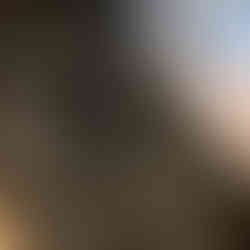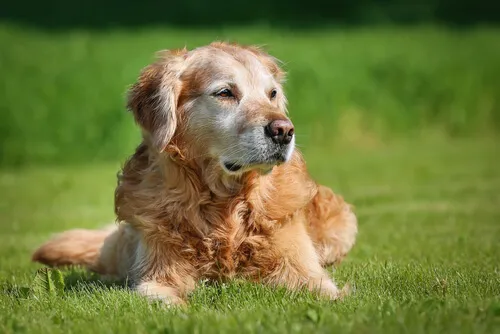Silent Pain in Dogs – Coat Changes
- bartonj63
- Feb 21, 2023
- 4 min read
Updated: Jan 28
If you own a dog, you will be all too aware of one thing. Dog hair gets everywhere! It hooks into your carpets & furniture, sticks to your clothes and even decorates the inside of your car. But did you know that dog hair has many important functions? And! Coat changes in your dog can be the result of underlying soft tissue dysfunction?
In my last blog 'Spot the Signs' I talked about how you (the owner) are in the best possible position to look for subtle signs of discomfort in your dog and how dedicating a few minutes a week simply watching your dog for changes in their posture, behaviour and movement will help you spot the subtle signs of silent pain. In this blog we take a closer look at the hair of your dog and how it can give us clues into what is happening beyond the fur.
The structure of Hair
Nearly all your dog’s body is covered in hair (fur). Each hair is composed of the protein keratin and grows from a hair follicle. In double coated dogs, hair follicles are compound, meaning that each follicle has two types of hair. A central guard hair surrounded by multiple wool hairs.
Guard hairs - are long, stiff and thick. They form the outer protective coat of your dog and lie closely against the skin giving the coat a smooth appearance.
Wool hairs - are shorter, softer, thinner and greater in number. They form the undercoat of your dog and provide an insulating layer to keep the body warm. Wool hairs increase in number during Winter to keep the body warm and are then shed during the warmer months.

Hair has many important functions
Protection - Your dog’s hair is their first line of defence against micro-organisms including bacteria, viruses and fungi. Sebaceous glands, contained in the skin, secrete an oil called sebum into your dog’s coat. This oil not only keeps your dog’s coat healthy and shiny but also helps prevent the growth of micro-organisms due to its antibiotic properties. The hairs also help to provide a waterproof barrier and UV protection.
Sensory - The skin and hairs of your dog are an extension of their nervous system. Hair follicles are surrounded by sensory nerve endings which respond to touch and movement and provide sensory information about the environment.
Heat regulation - Skin and hair play a minor role in regulating your dog’s body temperature. This is known as thermoregulation. When your dog is too cold the arrector pili muscles, attached to the guard hair follicles, contract, raising the hairs. This traps a layer of insulating air next to the skin.
Communication – When your dog feels threatened or excited the arrector pili muscles will contract involuntarily raising your dog’s hackles has a warning. This is a vital communication tool.
Hair and Muscular Health
During a first consultation with a client, I regularly ask the question, “Has your dog’s coat always looked like this, in this area, or has it changed recently?” I ask this question as the shape and direction of your dog’s coat can indicate underlying soft tissue dysfunction.
Why?
Fascia, a strong, flexible, continuous three-dimensional thread of connective tissue (like a spider’s web) wraps around every individual muscle fibre, muscle, bone, organ, blood vessel, nerve and cell in the body. Fascia links every structure in the dog’s body so that they can work together yet separately at the same time.
Healthy fascia - is well hydrated and relaxed. It can stretch and move without restriction and is free to slide and glide. It can also support the function and mobility of your dog’s entire body.
Dysfunctional Fascia - will start to bed down, adhere, shorten, become dehydrated, and lose its pliability. It becomes tight and restricted, causing tension and pain.
When the fascia in an area of your dog becomes dysfunctional, the skin tightens causing the hair follicles to behave differently. This causes the angle of the hairs, the length they grow and the condition of them to change.
Coat Changes
Lookout for areas of your dog’s coat that look different to the rest.
wavy areas
sudden tight curls/ flicks
hair lying in the wrong direction
courser, thicker areas
dry or dull
flattened areas
colour changes
stood on end (electric shock)
areas of scurf/dandruff
There are many different appearances, the important thing is whether it is normal for your dog. The changes can be localised for example a flick on the lower-back, or they can present as an entire thick wavy coat around the neck and shoulders. I call this "The Victorian Ruff." Changes in dogs with short or wavy coat can be challenging to spot especially if the dysfunction is over a wider area or has changed slowly over time (hint look for subtle changes in colour and thickness).
Changes in coat patterns can often mirror the shape of the underlying muscle. This is a very clear indication that there is dysfunction in that area. Take the example of the Quadriceps Femoris, a triangular shaped muscle situated on the fleshy part of the thigh. It allows your dog to extend (straighten) their knee (stifle) and flex their hip. The pictures below show how the coat changes (the electric shocked hairs) mirror the shape of the muscle.
The pictures below show Skadi, an agility Border Collie. You can see the coat flicks and waves to her coat above and behind her shoulders. The picture on the left is before treatment, the picture on the right is after her first session of Clinical Canine Massage Therapy. You can see the hairs are not as raised.

Recommendations I suggest taking monthly pictures of your dog’s back and side profile, as this is the easiest way to spot subtle coat changes that appear over time. I also recommend having regular FREE muscular health checks by your local Canine Massage Therapist so that any issues can be identified and addressed early. If you think your dog would benefit from Clinical Canine Massage Therapy, then please get in touch.
.
So, get your phone out and start snapping!











